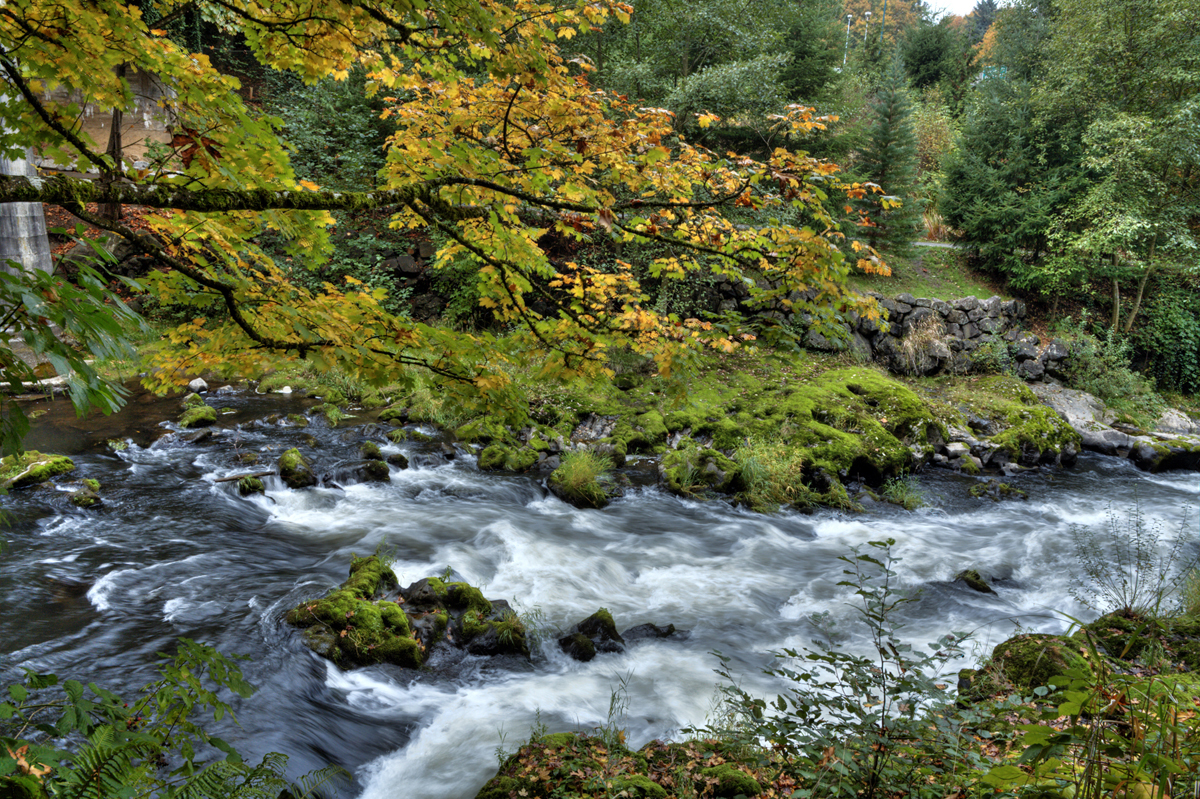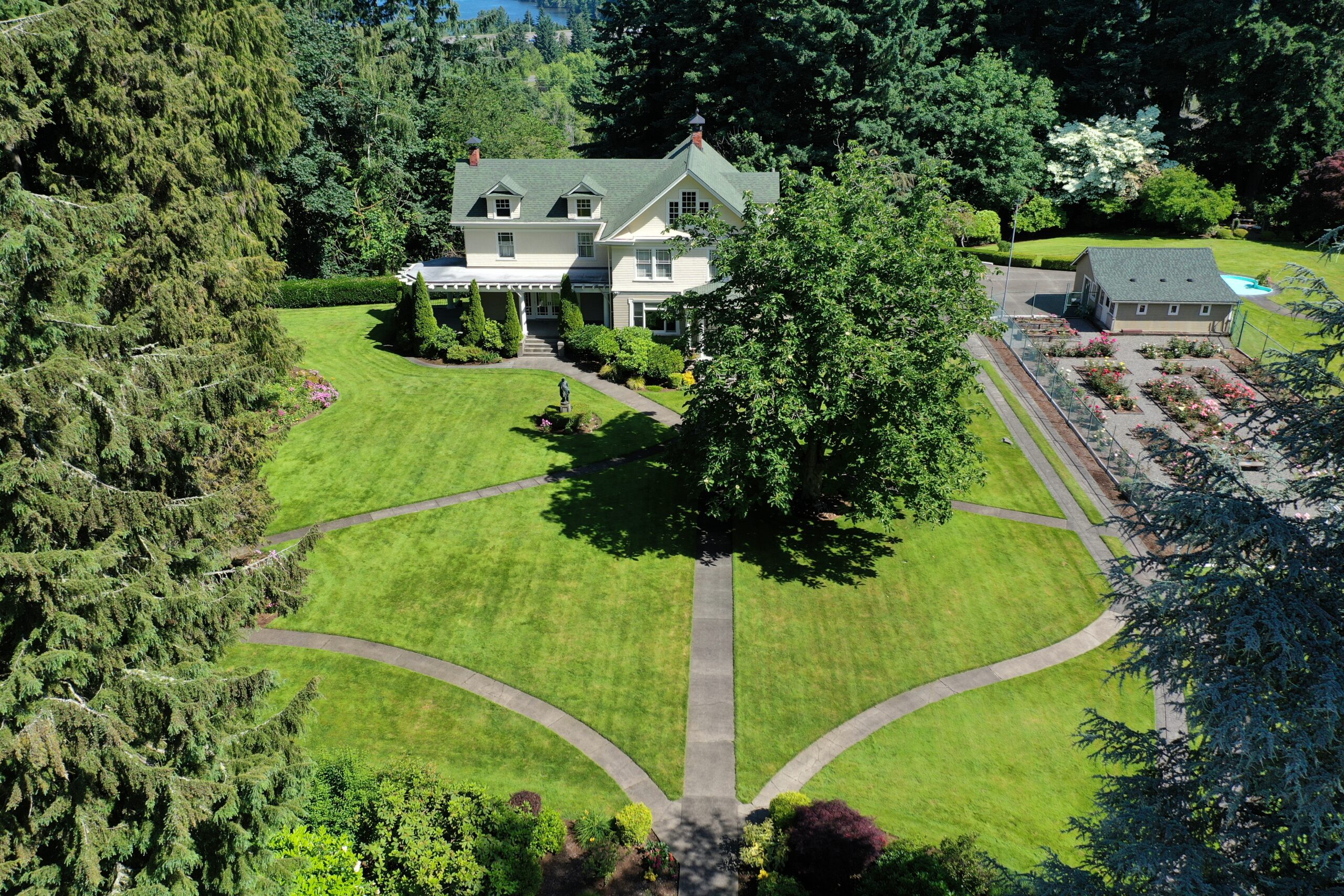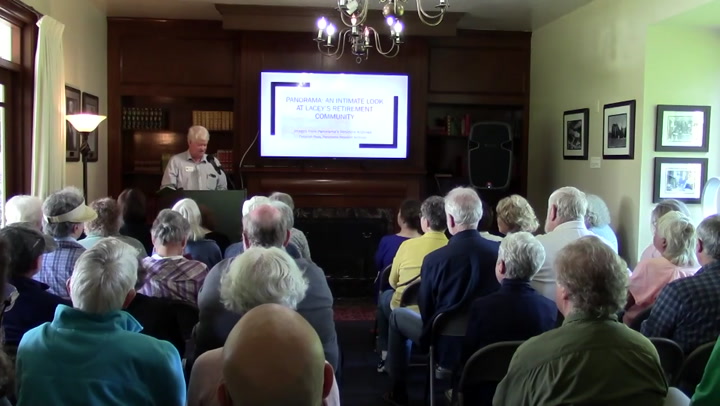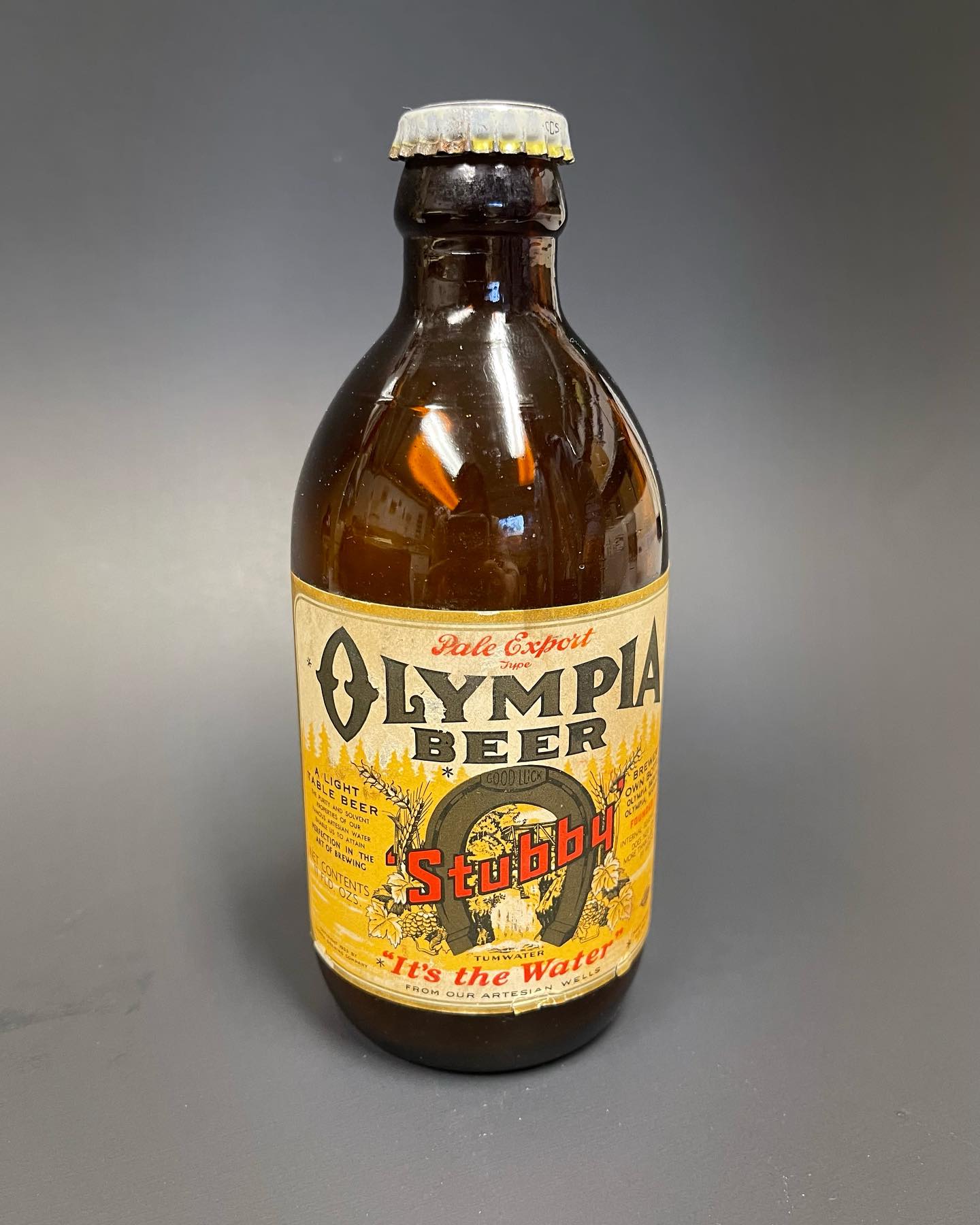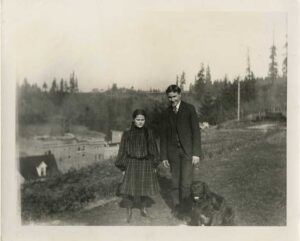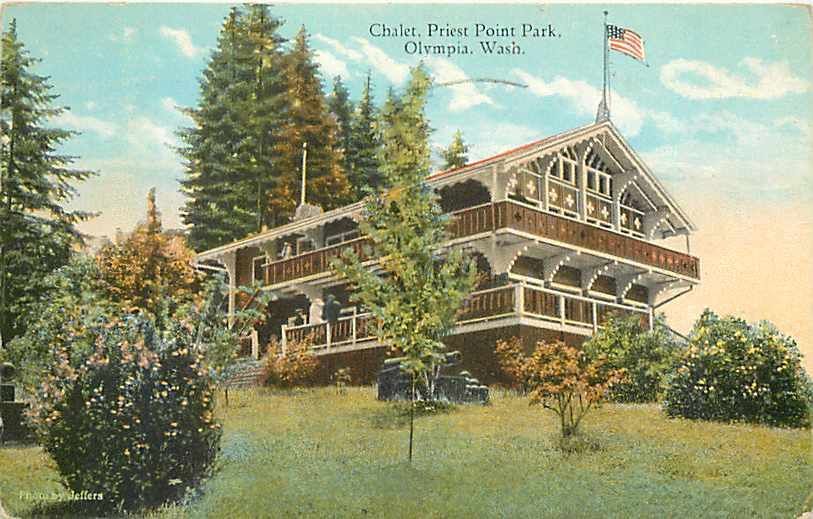
Many interesting buildings have been constructed in Thurston County over the years. Some still stand, while others have sadly disappeared. One of the most intriguing structures now gone was the Swiss Chalet that served as a gathering place in Olympia’s Priest Point Park for many decades.
This highly decorative building was originally made to be the Olympia Brewing Company’s pavilion at an early 20th century world’s fair in Portland, Oregon. The event, officially called the Lewis and Clark Centennial and American Pacific Exposition and Oriental Fair, lasted from June 1 through October 15, 1905.
Designed by architect H. J. Hefty of Oregon, the Chalet at the Lewis and Clark Exposition was a two-story building which measured 40 feet by 60 feet. The structure cost around $4,000 to set up. It proved to be a popular attraction at the fair. The Chalet and its exhibit even won a special award for the Olympia Brewing Company.
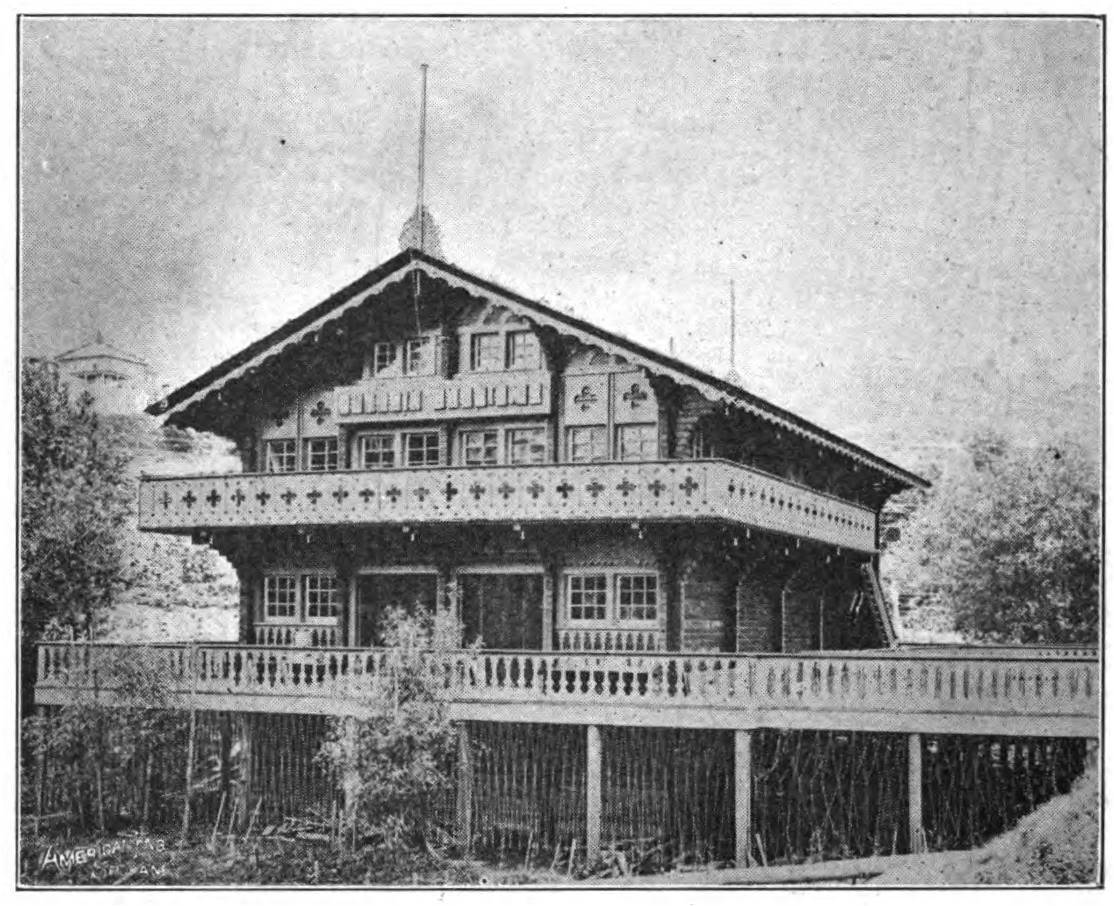

The Olympia Daily Recorder newspaper described the pavilion in June 1905:
“Visitors at the Lewis and Clark fair from this city will no doubt be interested in the pretty Swiss chalet, which comprises the exhibit of the Olympia Brewing company. It occupies a prominent position on sloping ground near the end of the Trail. Architecturally it is very attractive and the interior has many interesting features. . . There is an inviting reception room, reading, and dressing rooms for ladies, and other features tending to make the place inviting. A novel feature is a panorama representing the brewing plant at Tumwater. The large panoramic painting faithfully reproduces the big plant and the surrounding scenery. But the realistic features are made by the use of real water tumbling over Tumwater falls and real water to represent the Puget sound basin. The panorama with the realistic adjuncts is said to be a remarkable clever piece of work. A gallery is provided, giving the effect of looking down on the scene from the hill-top. In another room carbonated water, brought from the springs of Tumwater, which has made the beer famous, will be dispensed free. There will also be a display of the products of the brewery, but beer will not be sold or dispensed at the building.” (1)
After the world’s fair closed, Leopold Schmidt, the founder and long-time president of the Olympia Brewing Company, generously donated the Chalet to newly formed Priest Point Park. He even paid for shipping the dismantled building to Olympia.
A December 1905 Washington Standard newspaper article noted that “The [Chalet] building has been carefully taken apart and brought over by [railroad] cars and is now stored at the city pound awaiting fine weather and selection of location for placing in the public recreation grounds.” (2)
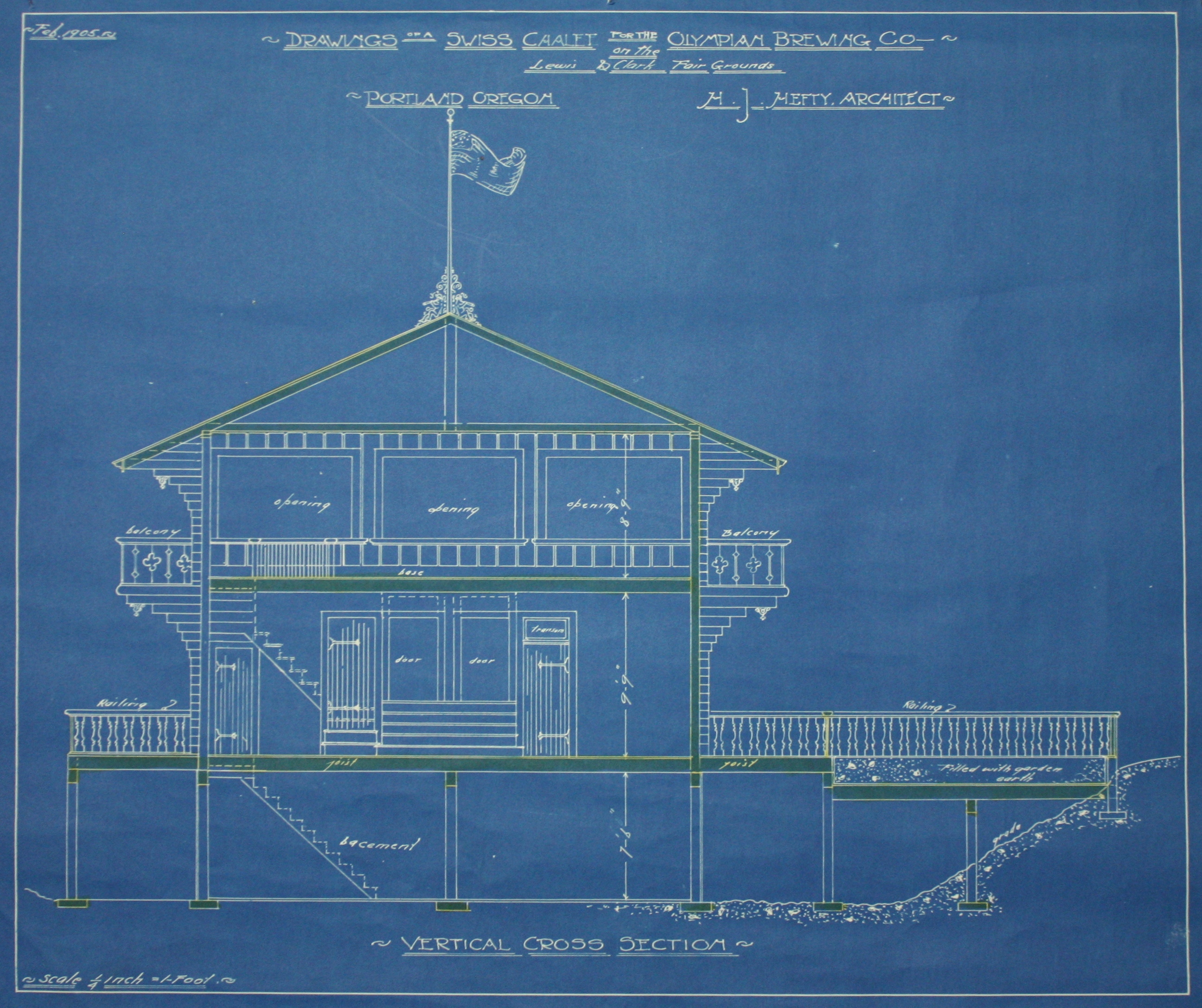

It took considerable effort to set up the Chalet at Priest Point Park. The Washington Standard in April 1906 reported that “The land has been cleared for the Summer house donated by Mr. Leopold Schmidt . . . at a cost of $111.20, . . .” (3) By June 20th the foundation was completed for the Chalet.
In July, volunteer workers labored to re-build the picturesque structure at the community park in Olympia. The Olympia Daily Recorder stated that as part of Park Day on July 26th “Good work was done on the chalet by the force of [volunteer] carpenters, 14 of whom were at work on the building at one time. The frame was put up, the floors on both stories laid and the siding put on up to the second story. The city will complete the structure at once.” (4)
Well, maybe not at once. It actually took more time to complete the Chalet at Priest Point Park and Leopold Schmidt ended up giving $200 for erecting the structure and providing furnishings. The Morning Olympian reported in July 1908 that the building “has been finished up and is ready for use of the public and will prove a popular place for dancing parties. On the main floor is a large room with a good dance floor, 30 by 60 feet. Upstairs is another good sized room 30 by 30, opening off from the balcony. It is hoped later, if funds are available, to put in a large fireplace in the main room.” (5)
The same paper added in early August 1908 that “the Swiss chalet, formerly the Brewery company’s building at the Portland exposition and donated to the city, has been completed, painted and [is] highly attractive.” (6)
For Park Day on August 4, 1908, the Chalet played a key role in the festivities capping a day of community volunteer work and fun at Priest Point Park. The Morning Olympian newspaper made the following observation:
“One of the most pleasing features of the day was given by the Olympia Independent band which donated its services for the day. A fine concert during the afternoon was given down in the glen and after the picnic and clambake the band furnished music for dancing at the chalet as long as the dancers wanted it. Stationed just outside the door on the broad veranda the entire floor of the chalet was left for the dancers and hundreds enjoyed the fine floor and excellent music. The park board members expressed themselves as especially grateful to Director Binheimer and the band boys.” (7)
So the Chalet became a major feature of Priest Point Park, and indeed in time a beloved landmark of Olympia. The next decade proved to be a golden age for the Chalet. Many social events, including weddings and parties, took place in the building. The structure’s second floor was used as housing for Park staff. This period saw a series of improvements for the Chalet and its grounds.
An April 1914 article in the Olympia Daily Recorder noted that “The park board have had a new ceiling to the room put in recently, have remodeled to some extent the side of the room and will have the whole interior tinted a dark brown by the time the summer season begins.” (8) In June 1914 electric lights replaced lamps in the building.
Four years later a fireplace was added to the Chalet in Priest Point Park. True to the Arts and Crafts movement of the day, the item, according to the Olympia Daily Recorder “is a large stone fireplace which has been constructed from the stones gathered on the beach. The mantel for the fireplace is a portion of a cedar tree, taken from the park itself.” (9)
Heavy usage of the Chalet continued for the next few decades. They included parties and dances sponsored by both groups and private individuals. By 1919 jitney dances even made their appearance at the Park. Other events were more sedate like when the McLane orchestra played in the structure in August 1920 for the annual picnic of the Thurston County Pomona Grange.
Still as we all know fame is fleeting. Eventually the Chalet lost its decorative elements and purpose. It became a storage shed. In 1961 the building’s porches were removed. I remember seeing the shed when visiting Priest Point Park as a kid.
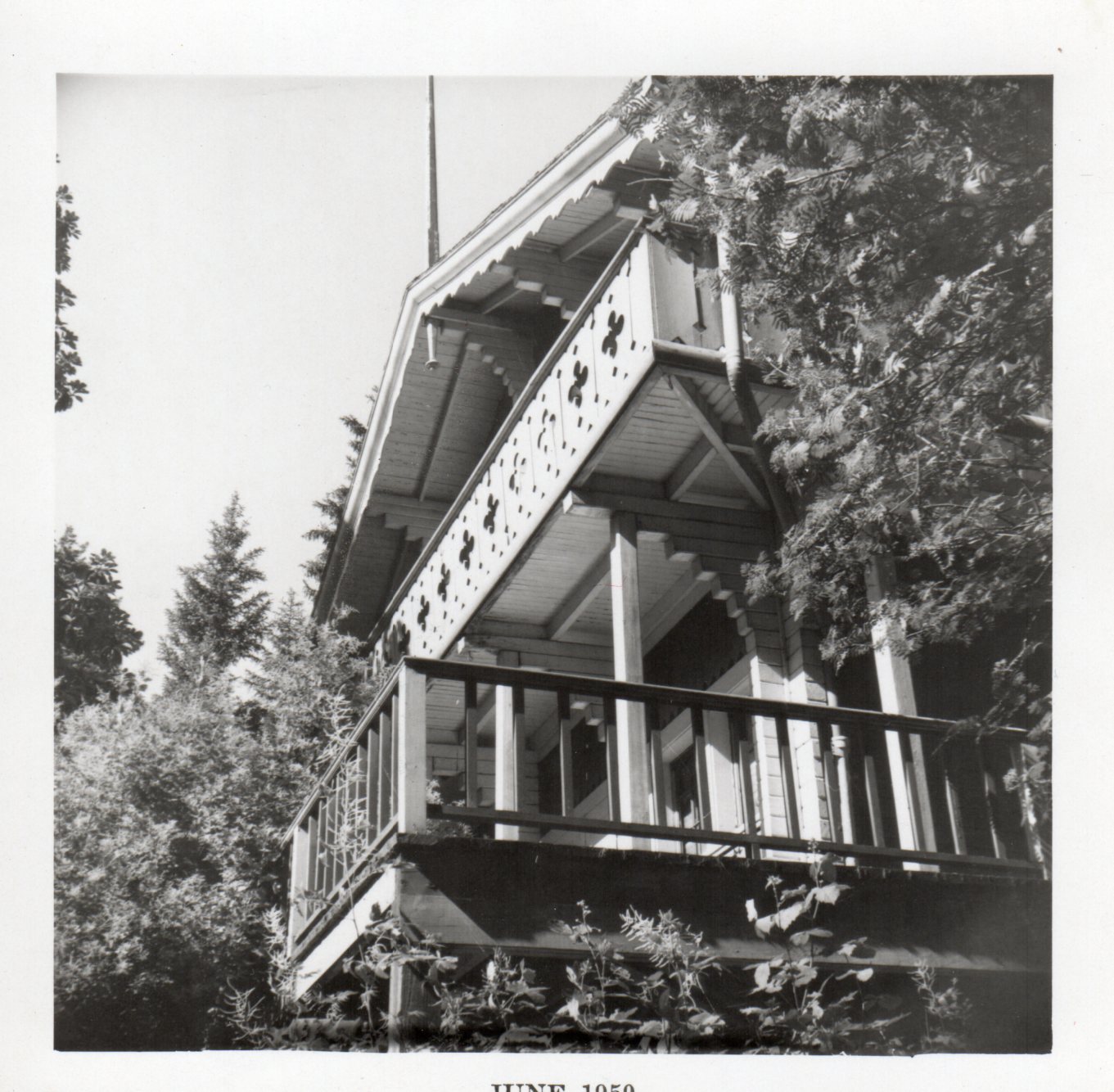

In the winter of 1964-1965 the old building was finally torn down, leaving only a solitary chimney which survived into the 1970s. To me as a park visitor at that time it was a strange remnant of a lost past. Then even the chimney crumbled and disappeared. Now the Chalet is only a memory.
What lesson can we learn from this story? It is important to realize what is significant to us in our community. Then we need to take steps to preserve these things so that they are not lost. Otherwise we will have only memories, documents, and perhaps a few images.
Acknowledgments
My thanks go to the Olympia Parks Department, Washington State Archives, and Washington State Library for providing key information; and to my family for their support and encouragement of my historical research and writing.
by Drew Crooks

